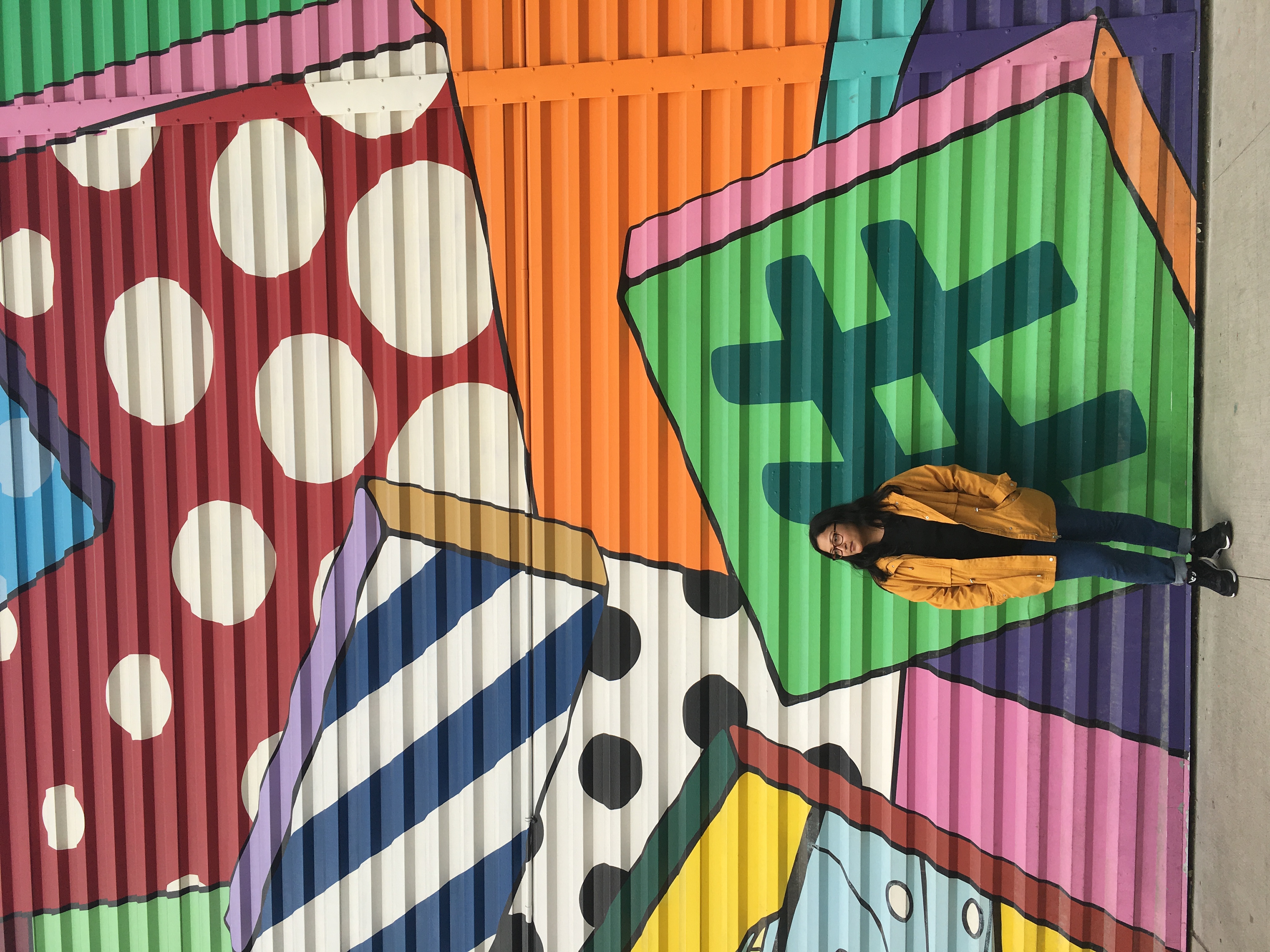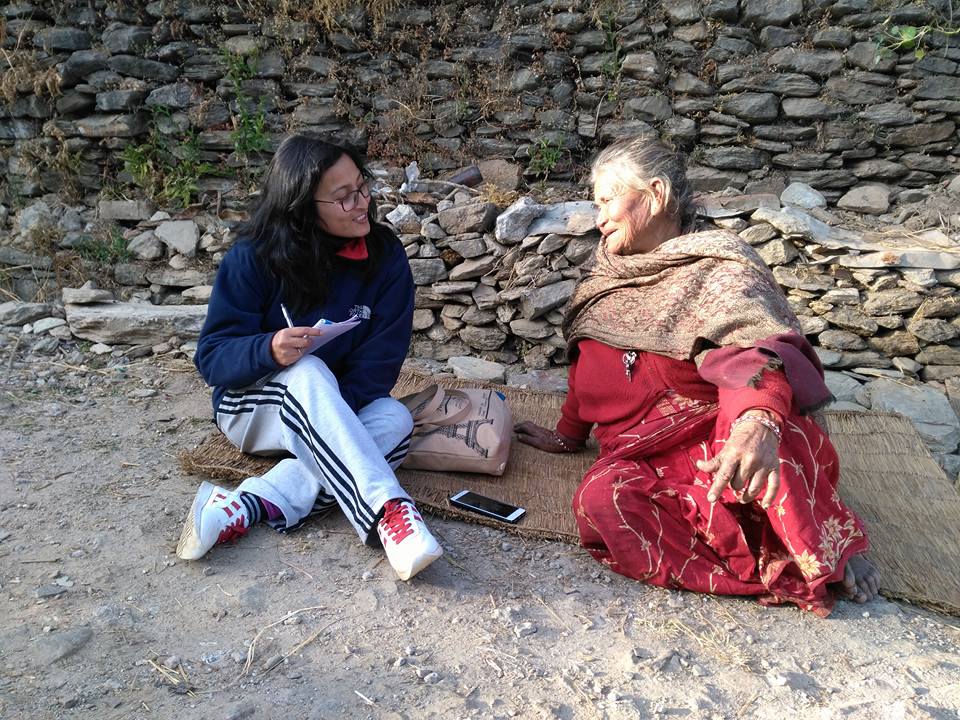
Writing journeys
13 MIN READ

This week on Writing Journeys, the digital editor of Nepali Times reflects on starting out writing and in journalism, and provides insight on how to tell stories through video.

Among the things I most want to explore with the Writing Journeys series are the different nonfiction storytelling strategies writers use to present, explore, and explain their research. As many of the essays and interviews in the series attest, all nonfiction writing in one form or another revolves around storytelling.
“Give the audience a reason to care” is what Sahina Shrestha emphasized in our recent conversation. Sahina-ji is the digital editor at Nepali Times and a careful student of storytelling. For her own progress as a storyteller, she credits Prateebha Tuladhar and other great writers, her Kathmandu University teacher and Nepali Times editor Kunda Dixit, and, not least, her grandmother – a skilled weaver of stories “about gods and demons, angels and fairies in faraway lands.”
Sahina ji and I discussed how the internet is reshaping journalism, around the world and in Nepal. I was interested to hear what’s new about digital journalism, but also what secrets of good nonfiction storytelling remain unchanged. We also discussed a bunch of other subjects, from comics to confidence, promises to Paddington Bear.
Sahina ji notes that with particularly good writing, even things she read long ago, she still carries the story and characters with her today. She appreciates writers such as Janet Malcolm who make nonfiction as compelling as fiction. “Finding the right characters and emotions is vital,” Sahina ji says about digital nonfiction, “as it gives the audience a reason to care and connect to the story you are telling.” I wish more nonfiction writers – particularly writers in my own tribe (academics) – spent a little more time thinking about how to make their writing as interesting as fiction.
Sahina doesn’t just read good writing. She studies it. She works at it. In school, her teachers asked her to memorize essays; she found ways to think creatively and find her own voice. Others get comments from editors and accept them without giving a thought; Sahina compares the original with the edited version to learn how to improve. She also puts aside articles to reread later for ideas and inspiration. Learning to write, she stresses, is “an ongoing process.”
Similarly, Sahina seems to be always on the lookout for good ideas. “Every person you meet can teach you something new,” she told me. And she’s always looking for good story material. “You need to always be recording.” Always recording…I like that.
Sahina Shrestha is a journalist interested in digital storytelling, product management, platform-native content and strategy, audience development and engagement, and everything web. She has a master's in journalism from New York University and is currently with Nepali Times. Sahina’s articles include ‘Restoring a piece of Nepal’s history’, ‘Overcoming Mt Everest and Covid-19’, and a series of videos featuring Anil Chitrakar on the heritage of the Kathmandu Valley.
Writing Journeys appears every Wednesday on The Record. You can find all previous editions of the series here.
***

What got you interested in reading and writing?
I have always loved stories, and I think my interest in reading and writing developed from that. My maternal grandmother was a master storyteller and every time we visited her, I would bug her to tell me stories. She would whip up stories about gods and demons, angels and fairies in faraway lands. Many of the stories were Nepali adaptations of popular western fairytales. While the world knew Rapunzel, I was introduced to sunkeshari rani.
During Indra Jatra and Seto Machindranath jatra, she would tell me stories associated with these festivals. This helped me appreciate my culture and heritage more.
In primary school, I won three books of Aesop’s fables in a competition and that opened a window for me to read books other than those prescribed by the school. My father bought me books like Sinbad the Sailor, Paddington Bear, and later, abridged versions of David Copperfield, Pride and Prejudice, Oliver Twist, and other nineteenth-century British classics, so I had a steady supply of reading materials.
Who taught you to write and how? How did you learn?
I don’t think I can give credit to only one person or institution. At school, we were required to write stories, poems, and essays as part of our subsidiary exams in both Nepali and English. Did it teach me how to write? I don’t know, but it got me interested in writing.
In class, essays were dictated by the teachers, and you memorized and copied them during exams. But, with other writing exercises (if you can call them that), I got an opportunity to explore my creativity and find my own voice in writing.
I learned journalistic writing (and it is an ongoing process) at school in Kathmandu University and on the job at Nepali Times. The structure of news stories is different from that of academic writing in the sense that the most important information (what might be considered as a conclusion in case of an academic paper) is presented first. The language and structure are also less dense. So, it was, and still is, an entire process of learning and unlearning.
Do you remember any moments your writing improved?
I’d like to think that improvement is a gradual process, and that my writing still needs a lot of improvement.
Something that has helped me learn is comparing my original copy with the edited version. I keep a copy of all the articles I have submitted and compare the original to the final edited piece. This not only helps me see the areas I can improve on but also how much I have improved since.
I used to keep cutouts of newspaper articles I liked from English national dailies and some foreign publications. I still have some articles saved digitally that I turn to every time I struggle to write simply or to structure a story.
Reading more definitely helps you write better. I look at how a sentence is crafted, the story structure, and how quotes are handled in the story.

Who are your favorite writers or books/articles and why?
One person who comes to mind is Pratibha Tuladhar. I enjoy the flash fiction quality of her writing. I must have been in middle or high school when I first started reading her stories in The Kathmandu Post’s ‘Fiction Park’. I cut out one of her stories about two friends with matching sweaters that had cherries on the front. Although I don’t remember the title, I still carry the story and the characters with me even today.
Janet Malcolm, who wrote for The New Yorker, is another. Her stories were deeply reported and beautifully crafted with very fiction-like storytelling, which made it more engaging for me to read. Forty-One False Starts (the profile as well as the book), The Journalist and the Murderer, and Six Glimpses of the Past are some of her works that I’ve enjoyed.
I like exploring different forms of storytelling, and I think comics in journalism is something that has so much potential but hasn’t been used as much. There are some notable works in this genre that I keep going back to like Joe Sacco’s journalistic graphic novels – Footnotes in Gaza, Journalism, and Palestine, among others – and Josh Neufeld’s A.D.: New Orleans After the Deluge, which gives us a glimpse of the human experience behind stories that have been covered widely by the media.
How did you get started in journalism?
I did not set out to be a journalist. I just liked telling stories.
I was a student of Media Studies at Kathmandu University where my editor Kunda Dixit used to teach journalism. During my fourth year of undergrad, I got an opportunity to intern at Nepali Times. Later, I joined as a reporter. That is how I got started.
Where do you write and at what time? Do you have writing rituals?
I do not have a writing ritual. I do prefer writing at home, early morning or late at night. I struggle to write in the afternoons unless it is absolutely quiet with no distractions. So, afternoons are usually reserved for any additional readings or interviews. But as long as it is not noisy and no one is staring at my screen, I am comfortable writing anywhere.
Do you find any software or apps particularly helpful? Any other secrets of being productive?
I do not use any apps for writing except MS Word and Google Docs.
You are asking the wrong person. I am a procrastinator. I leave everything to the last minute, and I promise myself that it will not happen the next time, only to repeat the cycle every time.
What were some of the things you worked on or learned about in journalism school in the US?
One important lesson I learned in grad school is: do not work for free. A lot of young writers make the trade-off for exposure. But I think at the end of the day, journalism is a profession and should be treated as one.
Another important lesson: the audience should be front-and-center in the journalism we do, and not something at the very end. From the selection of the story to reporting and distribution, we should keep our audience in mind. In this day and age, our journalism needs to be two-way communication.
Do you think about putting together the pieces of a video differently than a regular written article?
Just like a print story, a video news story needs to have a tight summary explaining what it is about and why the audience should care. But unlike a print piece, you need to find and record action for video. Sit-down interviews are rarely interesting. You need to have a script and a shot list before you film. Sometimes things you plan don’t pan out, so you must be able to think on your feet. You need to always be recording.
What makes a really great news or feature video?
First and foremost is the story itself. Does it fit or require a video format to be told? Not every story needs to be a video. Some are better off as a written or an audio piece, while others need to be visualized (not necessarily as a video, but maybe in graphs, photos, or illustrations).
Like news stories for any other format, newsworthiness is important. Journalistic videos need to show something new, interesting, or unusual. Then, there is visual appeal; some topics, people, and places are more suited to videos than others. Finding the right characters and emotions is vital as these give the audience a reason to care and connect to the story you are telling.
As I have mentioned above, actions make a video, but audio, as easy as it is to overlook, matters as much as what is shown on screen.
More importantly, every good news video needs to have a solid plot and a theme. Whether it is a longer documentary or a shorter video for social media, it needs to have focus. You also need to think about and adapt it to the platform you are publishing on.
In making a video, when do you rely on the words of a narrator and when do you let the video tell the story? Or do you ‘show’ and ‘tell’ both?
For me, I think both show and tell because your audio can convey so much meaning and give context to the images on screen. Ambient sound helps to give a sense of the location you are in and punctuate certain actions in the video. Sound bites from the interviewee tell us what the person is thinking or why they are feeling a certain way. Audio helps to move the story forward and often tie everything together. It can also set the tone and mood of the video. With the ‘show’ part, you can document unique moments in time and place, capture the expression and movements of people and things. Both together give a complete picture.
Can you tell us about a story or video that you are particularly proud of and why?
I am never satisfied with anything I do. Even after a story is published, I keep thinking about how I could have made it better, or what I could have done more or differently.
I enjoyed working on ‘Walkabout with Anil’, a video series where we try to tell the stories behind our culture and heritage. When I first pitched the idea, I was a little nervous. I was not sure whether the idea would get approved, or if Anil Chitrakar would be onboard and how our audience would respond. Thankfully, things fell into place and our audience appreciated the series. There are, of course, things we need to improve on technically and otherwise, which we hope to do in the second season that is currently in the works.
When you teach journalism, what most surprises your students?
I wrote to my students asking this question, and they mentioned two things: the role of an editor in shaping a story and the pay scale of journalists.
What words of advice do you have for young non-fiction writers? What advice would you give to an 18-year-old Sahina?
Read as much and as widely as you can. Every person you meet can teach you something new. Be open to learning about new things and experimenting a lot. Apart from these, a piece of advice I would give to my 18-year-old self (and it is something I can use today too) is – be humble but have confidence in yourself.

Tom Robertson Tom Robertson, PhD, is an environmental historian who writes about Kathmandu and Nepali history. His Nepali-language video series on writing, 'Mitho Lekhai', is available on Youtube. His most recent article, 'No smoke without fire in Kathmandu’, appeared on March 5 in Nepali Times.


Writing journeys
13 min read
This week on Writing Journeys, the digital editor of Nepali Times reflects on starting out writing and in journalism, and provides insight on how to tell stories through video.
Writing journeys
7 min read
This week on Writing Journeys, writer and editor Tenzin Dickie discusses writerly doubt and frustration, and drawing strength from good writing.
Books
12 min read
Eight young Nepali writers imagine the possible futures of climate change in a new collection featuring poetry and short fiction.
Writing journeys
11 min read
This week, for Writing Journeys, series editor Tom Robertson asked contributors what they enjoy most about writing. Here are their answers.
Writing journeys
12 min read
This week, series editor Tom Robertson reflects on writing and Writing Journeys, and distills everything he’s learned into sound advice.
Writing journeys
17 min read
This week on Writing Journeys, series editor Tom Robertson identifies 20 common mistakes Nepalis make in English and how to avoid them.
Writing journeys
21 min read
This week, Writing Journeys series editor Tom Robertson provides templates for his favorite sentences – with examples from Nepali writers.
Writing journeys
7 min read
In this week’s Writing Journeys, researcher and feminist writer Kalpana Jha provides insight into how writing can be a process of discovery and analysis.